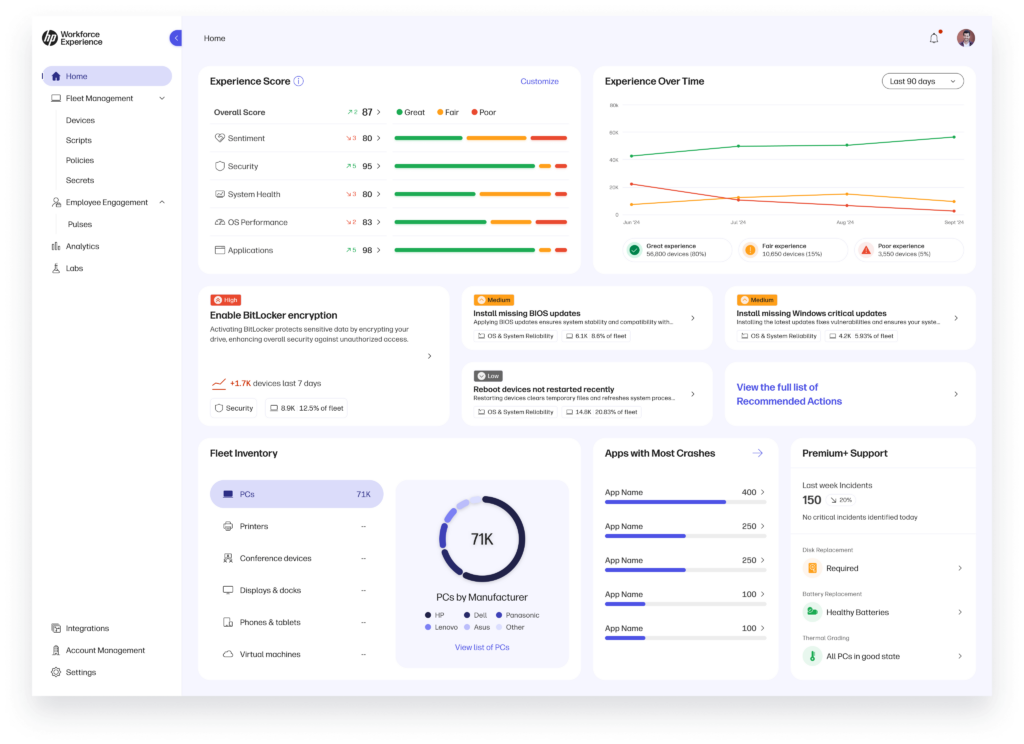Endpoint Software Considerations
IT experts share why unified device oversight, AI-powered detection, and integration discipline are essential for endpoint software success.
Choosing the right endpoint management software is a high-stakes decision that affects productivity, security, and IT resource allocation. With a crowded marketplace and shifting enterprise needs, selecting a platform that supports long-term scalability and immediate operational value requires more than a feature comparison. Experts offer practical guidance on what to prioritize, ranging from unified device control to intelligent automation and strategic alignment with broader tech investments.
Unified management across device types
Effective software selection starts with compatibility. Organizations today support a wide variety of devices, and management must be seamless across them all. The need for unified visibility and control continues to accelerate investment in cross-platform solutions. In fact, the global unified endpoint management (UEM) market is projected to grow by $111.62 billion between 2025 and 2029, driven largely by enterprise demand for operational efficiency and user consistency.
“HP’s extensive expertise in device and telemetry technology uniquely positions us in the digital workplace services market, enabling us to offer comprehensive visibility across all digital touchpoints through our device-agnostic platform.”
Faisal Masud
President of Worldwide Digital Services @ HPSource: HP, Inc. Named a Major Player in the IDC MarketScape
When evaluating endpoint management software, buyers should prioritize platforms that deliver true device-agnostic capabilities. This ensures consistent policy enforcement and simplifies oversight across operating systems and form factors. Unified endpoint management solutions reduce tool sprawl and support more efficient IT operations by consolidating workflows into a single pane of glass.
AI-powered anomaly detection and remediation
As IT teams face increasing workloads and limited bandwidth, the ability to proactively detect and resolve issues is critical. Platforms that embed AI and machine learning can serve as force multipliers, minimizing manual intervention. This is especially relevant as 67% of digital transformation efforts have been delayed due to IT skill shortages, according to IDC.
"Anomaly Detection is a machine learning tool that predicts potential issues before they occur. For example, it can identify a device at risk of failure and recommend proactive actions, saving time and reducing disruptions."
Asher Kagan-Criou
Workforce AI & Emerging Technologies Business Unit Leader @ HPSource: From Startups to HP: Building the Future of Digital Workspaces
Software buyers should assess whether endpoint management tools offer automated diagnostics, real-time alerts, and intelligent remediation. AI-driven features not only help reduce downtime but also boost the platform’s return on investment by lowering support costs and improving device uptime.
Demonstrated value and seamless integrations
It’s not enough for endpoint management software to work; it has to work well with other tools in the tech stack. As digital environments grow more complex, integration and ROI become key buying criteria. A McKinsey study found that organizations using AI for data integration see an average 20% improvement in data quality, underscoring the operational value of connected systems.
“IT leaders should require teams to justify the need for the new tool, demonstrate its value, and explain how it complements the existing tech stack. This approach ensures that every SaaS subscription aligns with the organization’s overall strategy and prevents impulsive adoptions that may lead to SaaS bloat.”
Kamal Goel
Senior VP of IT @ Hitachi Systems IndiaSource: CIO.com
IT decision makers should look for platforms that integrate easily with identity providers, analytics platforms, and support systems. Additionally, vendors should be able to demonstrate clear ROI through measurable performance gains, cost reductions, or productivity improvements. Choosing endpoint management solutions that offer seamless interoperability helps maximize the utility of existing investments while avoiding vendor lock-in.
In conclusion, successful endpoint management software selection hinges on three core considerations: cross-device unification, AI-driven automation, and strategic integration. Platforms must not only support diverse environments but also empower IT teams through intelligent workflows and demonstrable impact.









